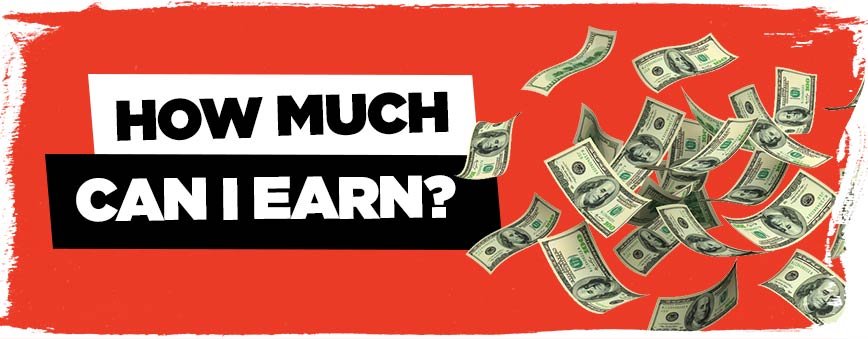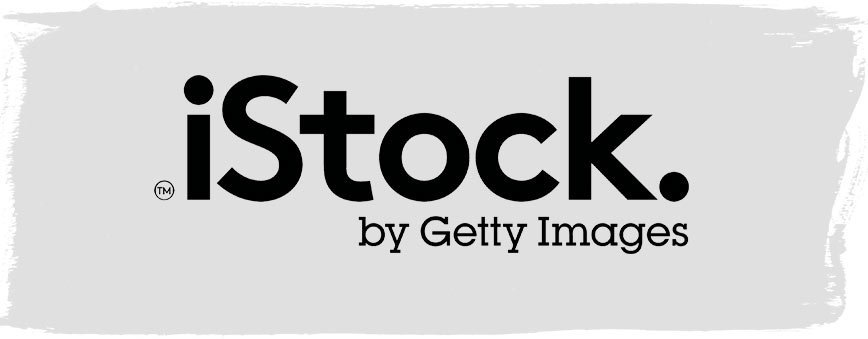
Contents
- Make Money with Stock Photography
- What is Stock Photography?
- Types of Stock Photography
- Does Stock Photography pay?
- If you Can Earn, How Much?
- Which Photos Sell the Most?
- How to Sell Stock Photos and Make Money Successfully
- Practical Tips You Can Use in Stock Photography
- What are the Most Popular Stock Photography Sites around?
- What are the Challenges of Being in Stock Photography?
- Conclusion
Make Money with Stock Photography

Whether you are a professional photographer trying to find a new revenue stream or a graphic designer wondering how to make money from the thousands of unused images lurking in your various hard drives, you might be glad to know that there’s one opportunity that many people have generally overlooked.
Stock photography is a great way to earn that extra passive income! There are numerous sites where photographers of all skill levels can submit their work for sale.
The market is readily available, with everyone from businesses, bloggers, publishers, graphic designers to publishers and marketers looking to buy these photos and use them regularly online.
However, the journey to making money is not as easy as it may sound; although this doesn’t mean that it’s impossible.
If you go into stock photography with a plan and execute it appropriately, you’ll be smiling all the way to the bank before you realise it.
In this post, we will tell you how to sell stock photos and make money!
What is Stock Photography?

Stock photography simply refers to generic imagery that people will buy to use as visual content to use on their blogs, websites, news stories, advertising material, and graphic design merchandise.
It is a much cheaper alternative to contracting a professional photographer and the photos are sold through platforms that specialize in storing a huge library of all sorts of images.
Buyers simply browse through the database of images to find those that appeal to them, with endless options to choose from. You can think of stock photography as the opposite of custom-made photos that have been licensed directly to a customer and the works created exclusively for that client’s purpose.
For instance, say you needed a high-quality photo of a family gathering eating a meal together; finding a photographer to put all the actors together, create the setting, as well as find the food would be a time-consuming and quite expensive affair. Instead, it would be far easier and less costly to just log into a stock photography website and pay a few dollars for a readily available picture.
Types of Stock Photography

The are three kinds of stock photography, although many people tend to focus on macrostock and microstock.
Macrostock photography, also referred to as traditional stock photography describes agencies selling high-valued and exclusive images.
These will license the individual photographs directly to a client and sell them for between $30-3000 annually. The owner of the photographs earns royalties from the images sold.
On the other hand, microstock are agencies that sell the photographs for much less (the price will typically range between 20¢ to $10) and offer no royalties. Instead of royalties, photographers get paid per download and the payment is credited at the end of the month in most cases.
Companies like Shutterstock, iStock, Envato Elements, and Creative Market are good examples of well-established microstock agencies. In this post, we’ll take a greater interest in microstock agencies. This is the easier option for a person who is contemplating getting into stock photography!
Does Stock Photography pay?

You can definitely earn money, but it’s no walk in the park! Although there are more than a couple of photographers making a decent living from selling photos to these sites, there are many more who can barely eke a dime from it. Ever since the advent of micro-stock some 15 years or so ago, things have really evolved. Now, all you need is a camera and an online photo editor and you’re ready to go!
However, the industry has made giant leaps today and the supply has by far surpassed demand. The competition, therefore, has reached fever-pitch! For instance, a microstock site like Shutterstock features more than 225 million images and sees at least 1 million more getting submitted almost every week.
In other words, photographers have to put in the extra effort and work even harder and smarter than their counterparts from a decade and a half ago when microstock had just been introduced.
That being said, with enough consistency, hard work and clever choice of images (if you follow trends / events / seasonal photos this will hold you in good stead) you’ll be successful.
Unless otherwise, it will be a while before the money starts rolling; you’ll need to post lots of images, with a bit of consistency and dedication. Before you know it, you’ll possibly be taking home $200-400 each month as a beginner “Stock salary”.
If you Can Earn, How Much?

This will, to a great extent, boil down to how many images you upload get approved, and how increasingly they progress to the point of getting a download. In some cases, the payment per download may give you a few cents if the picture was sold via a subscription.
However, these cents can be upgraded if you manage to consistently supply a considerable stock of quality images over time. Some websites will increase the payment if you happen to attain higher levels of downloads. For instance, you will get paid more per download if a single image manages 5 times download as opposed to one download for one picture.
Another thing to note is that you will earn even more if you accent to submitting your photos exclusively, which will then be included in the site’s exclusive program. For example, the microstock site iStock will pay as much as three times the commission to exclusive photographers.
In addition to iStock, Dreamstime pays and a bonus for every image that exclusive photographers successfully submit. The great thing about these websites is that you can see your portfolio growing rapidly and earning you good money without even being active on the site. This is because once your first successful uploaded photo starts selling, a given commission could hold out, allowing you to keep on earning for as long as a decade.
You must be asking what the numbers are? Well, industry experts suggest that to earn a monthly income of $500 on stock photography, you should be ready to upload 6,000 photographs; and that’s on the lower side! This is also to assume that you’re posting high-quality commercial content over various subjects within your niche. Also, all the images have been keyworded appropriately!
Which Photos Sell the Most?

If you are planning to join stock photography, then you should be willing to cope with a bit of rejection. While most of your pictures may get approved by the microstock sites, you can be sure that the agencies are going to pass on others for having outdated issues or other violations. Remember that these companies make their choices depending on the kind of photos clients are asking for; therefore, you can’t expect them to accept everything you have to offer. In short, they are guided by customer demand and not the photographers’ portfolio.
Customers who come to stock photography sites do so to find images that they can use in their professions such as promotional materials, merchandising purposes, website designs, logos, icons, etc. It is up to you to establish a niche market and target it so that your pictures may get a higher approval rating. Most successful photographers tend to use simple pictures on a white background. The more photos you sell, the more money you can expect to make from stock photography.
For instance, some of the categories of photos that sell the most include images of pets such as cats and dogs that can easily be photoshopped onto a different background. Other popular photos are based on subjects like lifestyle, nature and landscapes, travel and destinations, business and industry, holidays, current news and affairs, etc. Another important thing to note is that simple photographs tend to be the most successful in stock photography sites.
How to Sell Stock Photos and Make Money Successfully

The key to offering marketable stock images is pegged on researching the markets and the latest trends moving the demand. It means performing extensive due diligence to see what holidays are around the corner or what is currently selling to capture related images successfully.
The top earners on various stock photography websites take their time to plan shoots carefully and are often meticulous about what they do.
You’ll find some using props and models or even making the journey to particular destinations where events in high demand are taking place. These professionals take a keen interest in the customer forums and websites requests for new photos, as well as spend time browsing through the existing stock libraries to determine what could be missing.
Practical Tips You Can Use in Stock Photography

Take Great Photos
The first thing is to ensure that you’re good at stock photography and the only way to do this is by taking great photographs. Top microstock sites such as 500px and Shutterstock maintain very high standards and tend to have a higher rejection rate than the approval rate.
As such you should carefully browse through the images in these sites and understand what they need before you start shooting photos to upload on microstock websites.
Try to base your content on the standards of the better stock sites. Although there are other websites with lower standards, these will generally pay less in commissions.
If you feel like you still need to fine-tune your skills after going through existing stock libraries, several amazing online photography courses will greatly improve your skills. Take the time to improve on areas of photography that are most enjoyable to you; whether its fishing, travel, or lifestyle. Remember that stock photography should not turn into a chore; rather, it should be something you’re passionate about and one you wouldn’t think twice about doing.
Keywording
Keywords are the basic way in which prospective clients find photographs to buy. As such, the appropriate keywords are pretty crucial if you expect a buyer to bump into your images.
The following beginner tips will help you get your keywords in stock photography just right:
Your keywords should be as descriptive as possible. This may also mean that you list them according to their level of importance, and this usually depends on the microstock company you’re working with. For instance, you’d want to use more specific keywords like “dog” before more generic terms like “pet”. In short, the more specific the better!
Indicate the number of subjects in your shots; are they in the singular or plural form? i.e “car vs cars”. Also, include any objects that could be in the image and list actions like “walking” or “dancing”.
If you think your image showcases a concept such as “hope” or “workmanship”, be sure to highlight this as well. Some sites like Adobe Stock provide an auto keyword tool that works quite well; just do not be too reliant on it. Instead, it’s best to research and ensure that you aren’t missing any keywords as you arrange them according to their relevance. Fortunately, you can access some great keywording tools around to simplify this process!
Pay Attention to the End User
To make your photos more marketable, you need to offer something that end-users are looking for. Businesses, bloggers, and marketing agencies are the end users that determine what sells and what doesn’t.
So, what exactly are they looking for? Precisely, they want image content that enables them to illustrate various concepts or complement the different ideas they’re trying to sell. This can be anything and everything, although some issues will be of higher demand compared to others.
For example, corporations are always in need of images that relay concepts like “teamwork”, “family”, “leadership”, “trust”, etc. The more photos you upload that bring such concepts to life will increase your likelihood of getting a big payday. Meanwhile, people running websites and creating ads are often in search of images with plenty of empty or negative space where they can add text! In a nutshell, the above will translate into three crucial questions:
Who’s going to buy this?
What are they going to use it for?
How will they use it?
If you shoot your photographs with the above questions in mind, then you’re on the right track for a high-selling stock photography portfolio.
Upload Regularly
Regular uploads are key for a good number of reasons. Firstly, having more photos out there will increase your chances of making a sale. Also, it ensures that your images appear on more search results so that it is more likely a prospective client will bump into them. Finally, trends are highly dynamic and any photo that is popular today may seem outdated as early as in the next few months.
What are the Most Popular Stock Photography Sites around?

There are numerous sites available that can launch you into the stock photography world. These have may have different offerings but the concept remains the same in almost all of them. Some of the highly preferred microstock agencies by photographers include:
Shutterstock

This is by far the most preferred company! It serves both large and small clients, from corporations to individual graphic designers and bloggers. One of the biggest draws that Shutterstock has on end-users is the huge library of videos and images that serves more than 150 countries. This means you can find practically an image on any subject you might be searching for. The best part is that it is among the most price-friendly sources of for-purchase stock photos out there.
Dreamstime

Many photographers will readily recommend Dreamstime. The site pays anywhere between $0.34 and $2.38 for an image sold. One interesting aspect of this site is that it is among the few platforms that will let you upload photos that you’ve taken using your phone. The only shortcoming with Dreamstime, according to some users, is that their submission tool tends to be too slow. If you are not using an automatic submission too, the wait can drive you bonkers!
Adobe Stock/Fotolia

Fotolia has been with us for a while now but it was acquired by Adobe and many stock photographers found their sales taking an upward trend. This site has pay rates similar to Shutterstock’s, although slightly higher. One thing worth noting about Adobe Stock is that you can effortlessly upload your photos via Lightroom, which is an added advantage for those who perform careful keywording and metadata using this tool. Furthermore, Adobe software users can purchase images directly through any Adobe platform. Another feature that further endears them to photographers is the ease of submitting images.
iStockphoto

This is one of the largest and most favorite microstock platforms you can post images for sale. It was acquired by Getty Images, resulting in most of Getty’s software innovations getting integrated with iStock. To join iStock, you’ll be required to pass a test first! This test entails understanding the legal and quality aspects in line with producing stock photos. If you’ve done your homework, it is a relatively easy test to pass. After passing it, you’ll be requested to submit a photo ID then inspectors will assess your first three uploads before deciding whether to approve you.
Alamy
Alamy may not be as huge as iStock and Shutterstock, but they’ll pay you an impressive 50% on each sale. In some cases, you may be able to make more than $50 for an image, which makes this site even more appealing. They also boast a better submission platform compared to iStock, although they have very strict submission standards. If you are in the live news photography business, Alamy is possibly one of the best options for you. They do a great job at selling editorial photos and since it’s a British site, there are relatively few to no barriers to entry. Additionally, the high commission rates are another pull factor on this platform.
What are the Challenges of Being in Stock Photography?
Stock photography may be a great and easy source of passive income down the line, but be warned it’s not for the faint of heart! The thing is, many would-be contributors throw in the towel within the first few months of being in it. Their reasons are plenty and different, but will typically boil down to the fact that the returns weren’t what they expected in those first few months.
One of the common reasons for low returns and possibly rejection is image quality. Not to mention that they compete with thousands, if not millions of photographers from around the world, as well as a 15-year stock library that already exists. Add this to the fact that it requires great dedication and patience to upload 100 images every month and have them approved.
Furthermore, it’s no walk in the park to come up with unique content is an extensively saturated market. It will need so much creativity and the content you post has to be very marketable.
It is safe to say that if you’re simply looking to offset some of your unused photos lurking inside your many memory sticks, this probably won’t end in a payday for you!
When you consider all the challenges above, it might seem like all odds are against you. However, stock photography is business, and it takes creativity, perseverance, and dedication to produce content that will not only be “out of the box” but also marketable. Remember that it’s only those who have a knack for business that are the most successful. The same applies to stock photography!
Conclusion
Overall, stock photography is a great investment for any serious amateur looking to earn some extra money. The important thing here is that it will take a lot of patience, dedication, and consistency to revel in the fruits that microstock agencies offer.
The fact that you have the choice to be a part-time or full-time contributor only makes the deal sweeter for you. The above guide takes you through various aspects of how to sell stock photos and make money; use it to reach that extra $500 per month that you’ve always been dreaming about!



Leave a Reply
You must be logged in to post a comment.